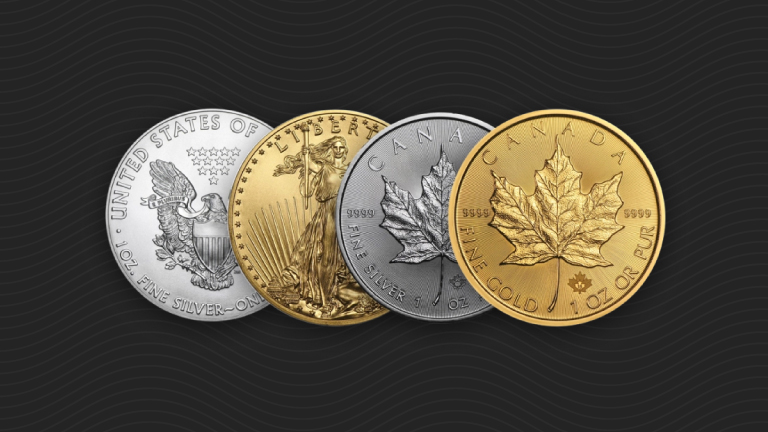Obama’s “Recovery” Will Lead to a Dollar Collapse (Video)
Graham Ledger spoke with Peter Schiff last week about all the official excuses for the poor first quarter GDP. Ledger compared this winter to the epically poor winter of 1984, when the GDP still managed to rise by more than 4%. On top of that, he compared the so-called Obama “recovery” to the Reagan recovery of the mid-80s when GDP stood at about 3-4%. Peter agreed with all of Ledger’s points and shared his strategy for protecting your investments from the economic fallout of the Fed’s monetary manipulation.
Highlights from the interview:
Graham: In [the winter of 1983 and 1984]… That was considered the worst winter of our time. But if you look at the GDP from 1983, it was about 4.3%. For 1984, it was a robust over 7%. So this nonsense coming from the White House [that this poor first quarter GDP] is all about the weather is exactly that – nonsense, is it not?
Peter: Yes, and it’s not just the White House. All the Wall Street analysts. The Federal Reserve came out today with a statement dismissing all the weak economic activity as being transitory, blaming it on the weather and other excuses. That 0.2% number – it’s actually a lot worse than that. Because in order to manufacture that meagre 0.2%, the government actually pretended that inflation during the first quarter was negative 0.1%. So if inflation was more than plus 0.1, then the economy actually contracted. The last time we had a negative GDP deflator was in the second quarter of 2009. That was during the Great Recession. To find another quarter, you have to go all the way back to 1949 to find a negative inflation quarter. I think the government made this number up, so I think the economy is a lot weaker than plus 0.2%…
Graham: We’re still using this word recovery. Now six years into quote, “the recovery.” Six years into the Reagan recovery in 1986, there was GDP around 3-4%. Yet in the Obama “recovery,” we’re still talking about these horrible GDP numbers. Are we being dumbed down by this administration, by the Fed and by Wall Street to accept these GDP numbers?
Peter: Yes, by everybody. And this is not a real recovery. Remember, the Reagan recovery was the byproduct of sound money, higher interest rates, lower marginal tax rates, smaller government. That’s not what we’re getting now. We’re getting cheap money. We’re getting tax hikes. We’re getting bigger government, more spending. This is not going to drive a legitimate recovery. All this has done is inflate a bubble, and all the Fed is trying to do is nurture that bubble and prevent it from popping. It’s trying to put on a smiley face and pretend everything is all right. The question is, when we don’t get the rebound that the Fed is forecasting in the second and third quarter, will they still have any credibility? It’s beyond me why they have any left, because they’re the worst economic forecasters out there, yet the markets still take their forecasts seriously…
In order to maintain the phony recovery, [the Fed] has to keep the monetary spigots wide open. They have to keep interest rates at zero. They have to do more rounds of QE. But all of that undermines a legitimate recovery. It prevents one from taking place…
Graham: You talk about bubbles. Which bubbles are going to break first? Is it the stock market if quantitative easing is stopped completely? Is it the housing market? Is it the dollar? Is it student loans? All of the above? Where?
Peter: If the Fed actually did raise interest rates, the stock market would crash, the real estate market would crash. We’d have a worse financial crisis than 2008. But if they don’t raise interest rates, because they don’t want any of that bad stuff to happen – it’s actually good stuff in the long run, but it’s going to be painful in the short run – If they want to postpone that pain, then what is going to collapse first is the dollar bubble. In fact, over the past two days, the dollar has had it’s biggest two-day decline in six years. I think the dollar still has a long way to fall, particularly when people figure out that the Fed is not going to raise interest rates, but launch another round of quantitative easing…
Graham: Where do we go with our investments? Gold?
Peter: That’s one place to go… I think people should certainly have gold in their portfolio, but they shouldn’t own gold to the exclusion of other assets. I think the important thing is to get out of the US dollar, to buy quality dividend-paying stocks in other countries. Countries like Singapore, New Zealand, Hong Kong, Norway. There are other places in the world where you can invest, where you can get huge currency gains. You can get good dividends and buy real quality assets. But I think the window of opportunity to get out of the dollar is going to shut pretty quickly, so I think if you are serious about doing something to protect your wealth, you should act quickly…
Get Peter Schiff’s latest gold market analysis – click here – for a free subscription to his exclusive weekly email updates.
Interested in learning more about physical gold and silver?
Call 1-888-GOLD-160 and speak with a Precious Metals Specialist today!

